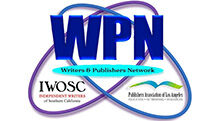 by Bobbie Christmas
by Bobbie Christmas
Q: Do single quotation marks indicate irony? Do they indicate thoughts? When should I use single quotation marks?
A: Use great caution when using single quotation marks. Many writers use them incorrectly, perhaps because their use in American English differs from the British. In American English single quotation marks should be used only inside double quotation marks, with the exception of headlines. Following is information on single and double quotation marks from my book doctor’s desk reference book titled Purge Your Prose of Problems:
Quoted words, phrases, and sentences run into the text are enclosed in double quotation marks. Single quotation marks enclose quotations within quotations; double marks, quotations within these; and so on. The practice in the United Kingdom and elsewhere is often the reverse: single marks are used first, then double, and so on. For American audiences, use American punctuation.
Never use single quotation marks in running text for any purpose other than as a quote within a quote.
In headlines, chapter titles, and titles, however, single quotes are more appropriate than double quotes. Example: ‘Appropriate’ Behavior Depends On Culture
Note that it is a fallacy that thoughts belong in single quotation marks. They don’t. Period.
Here’s another entry in Purge Your Prose of Problems about thoughts:
A writer’s job is to train the reader to understand when characters speak and when they merely think.
Sticklers remind us thoughts always tell, rather than show, because in reality we cannot read someone’s thoughts. Strong writers therefore avoid revealing characters’ thoughts. Instead they show what characters are thinking through their self-talk or dialogue.
If adding thoughts to a novel, however, here are important things to know:
Format: While Chicago style no longer advocates using quotation marks or italics for thoughts, many readers are accustomed to seeing thoughts printed in italics, and that format is acceptable, even though not recommended, as long as it is consistent.
Direct thoughts: Direct thoughts are always in first person and are usually in present tense.
Example: Mike pondered, Should I go to the meeting or stay home with Brenda?
Indirect thoughts: Indirect thoughts often include “that,” even though the word may be understood and not stated. Example: Bill thought the rain would never stop. (“That” is understood.) Indirect thoughts never call for quotation marks or italics. Example: Ezra thought he’d like to get new shoes.
Creative Writing Tip: Instead of complicating a manuscript with italics or repetitions of “he thought/she thought,” strong writing uses characters’ body language to show, rather than tell, what the characters are thinking.
Examples:
Ray blinked. She was the sexiest woman ever to walk through his door. Was she married?
Was four dollars a decent price for the bag of flour? Sam rubbed his chin. He never had to buy supplies before.
Mary pushed her hair behind one ear. Did the interviewer have any idea she lied on her résumé?
Bobbie Christmas, book editor, author of Write In Style: Use Your Computer to Improve Your Writing, and owner of Zebra Communications, will answer your questions, too. Send them to Bobbie@zebraeditor.com. Read more Ask the Book Doctor questions and answers at www.zebraeditor.com.
